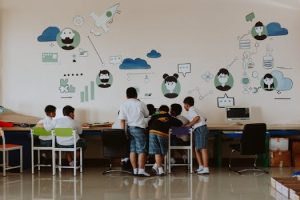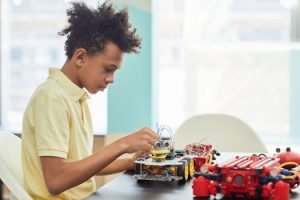Algorithmic Personalization of Student Journeys
The landscape of education is constantly evolving, with new technology and methods being introduced to enhance the learning experience for students. One such innovation that has been gaining traction in recent years is algorithmic personalization of student journeys. This practice involves using data-driven algorithms to tailor the educational journey of each individual student. In this article, we will delve into the world of algorithmic personalization and explore how it is changing the way students learn and progress.
Understanding Algorithmic Personalization
Algorithmic personalization involves leveraging data and algorithms to create personalized learning paths for students. This technology has its roots in the field of artificial intelligence, which aims to replicate human intelligence and decision-making processes. The idea behind algorithmic personalization is to utilize the vast amount of data available on students and their learning patterns to create a customized learning journey, rather than a one-size-fits-all approach.
The Benefits of Algorithmic Personalization
The biggest advantage of algorithmic personalization is that it allows for a highly individualized learning experience. No two students are the same, and each one has their own unique learning style and pace. With algorithmic personalization, students can learn at their own pace and in a way that best suits their needs, rather than being bound by a rigid curriculum that may not work for them.
Additionally, the use of algorithms ensures that students are constantly challenged and engaged. The algorithms continuously adapt and adjust to a student’s progress, providing them with appropriate challenges and feedback to keep their learning journey interesting and productive. This can help prevent students from getting bored or disengaged, which is a common issue in traditional classrooms.
The Role of Teachers
Some may argue that algorithmic personalization takes away the role of teachers in the learning process. However, this is far from the truth. The use of algorithms does not replace teaching; rather, it enhances it. Teachers can use the data generated by algorithms to gain deeper insights into their students’ progress and areas of improvement. This allows them to provide more targeted and effective instruction to their students.
Moreover, teachers can also use the data to identify struggling students and provide them with additional support and interventions. This helps ensure that no student falls through the cracks and that every student receives the necessary attention and guidance.
The Implementation of Algorithmic Personalization
Algorithmic personalization is still a relatively new concept, and its implementation may vary depending on the educational institution. However, most institutions follow a similar process. It starts with collecting and analyzing data from students, such as academic performance, learning styles, and preferences. This data is then used to create a customized learning plan for each student, with the algorithms continuously monitoring and adjusting the plan based on their progress.
Challenges and Concerns
Like any new technology, algorithmic personalization also comes with its own set of challenges and concerns. One of the main concerns is privacy and data security. There is a need for strict regulations and policies to ensure that student data is protected and used ethically.
Moreover, some critics argue that algorithmic personalization may create a “one size fits none” situation, where certain students may not fit into the algorithm’s mold and struggle to learn. There is a need for continual evaluation and fine-tuning of algorithms to address these issues.
The Future of Algorithmic Personalization
The use of algorithmic personalization in education is still in its early stages, and it is continuously evolving. As technology advances and more data becomes available, we can expect to see more sophisticated and effective algorithms being developed to serve students better. This could include the use of artificial intelligence and machine learning to provide even more personalized learning experiences.
Final Thoughts
Algorithmic personalization of student journeys is a game-changer in the field of education. It has the potential to create more engaging, personalized, and effective learning experiences for students. However, it is essential to ensure that the implementation is done in an ethical and responsible manner, taking into consideration the concerns and challenges it may bring. With the right approach, algorithmic personalization could revolutionize the way we learn and shape the future of education.









